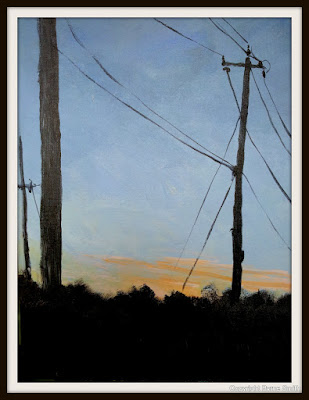 |
| San Antonio River at S. Alamo Oil on Canvas Panel 20 x 16 in/ 50.8 x 40.6 cm Copyright Byrne Smith 2015 |
I last painted on December 23. Due to the location of my studio, I had to pack up my paints and supplies and put them away for another day.
It's not that I haven't been thinking about painting, I have. I thought about painting as I thumbed through several great art books I received as gifts. I'll tell you about them in a future blog.
I completed the painting of today's image on the 23rd. I actually worked on it at two separate times. It's from a reference photo I took on a recent visit to the location. I first painted it in October, but wasn't satisfied, and so, put it away.
The original photo was taken during the "golden hour" around 5:00 p.m. in September. Because the sun was beginning to set, there was strong horizontal light from the right. That made the trees on the left appear too bright (in the photo)--as in the color of Cad Yellow Light--so that's the way I originally painted it.
As I said, however, I wasn't satisfied, and it took me a couple of months to figure out what the problem was. The trees in the photo had too much chroma. I toned them down to more natural-looking greens, even though that's not the way they actually looked.
Anyway, I finally finished it and gave it away as a gift, but only after I was happy with the results.
A painting isn't finished until the painter says it is.













































